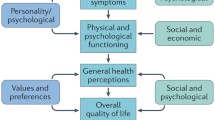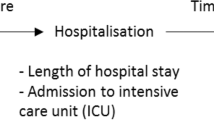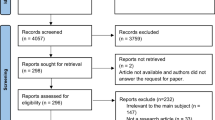Summary
Quality of life (QOL) analysis provides a unique insight into the global impact of drug therapy as seen from the patient’s perspective. Because of their relative novelty, these measurements have been preferentially applied to more recently developed drugs. There are little data of this type available for most of the more established heart failure agents.
Modern QOL measurement techniques appear robust and have provided support for the use of angiotensin converting enzyme inhibitors in heart failure and the use of β-adrenoceptor blockade in dilated cardiomyopathy.
QOL analyses raise ethical questions when such measures indicate an apparent improvement in measured QOL in response to a drug whilst, at the same time, being associated with decreased survival amongst users.
There are some unresolved methodological problems with the interpretation of QOL data. Despite these, QOL analyses represent an important advance as they provide valuable complementary data to more traditional indices in the assessment of the effect of treatment on the disease process and patient well being.
Similar content being viewed by others
References
Hollenberg NK, Testia M, Williams GH. Quality of life as a therapeutic end-point. Drug Saf 1991; 6: 83–93
Bulpitt CJ, Fletcher AE. Quality of life evaluation of antihypertensive drugs. Pharmacoeconomics 1992; 1: 95–102
Franciosa JA, Park M, Levine TB. Lack of correlation between exercise capacity and indexes of resting left ventricular performance in heart failure. Am J Cardiol 1981; 47: 33–9
Blackwood R, Mayou RA, Garnham JC, et al. Exercise capacity and quality of life in the treatment of heart failure. Clin Pharmacol Ther 1990; 45: 325–9
The Criteria Committee of the New York Heart Association, editors. Nomenclature and criteria for diagnosis of diseases of the heart and great vessels. 9th ed. Boston: Little Brown, 1994
Goldman L, Hashimoto B, Cook EF, et al. Comparative reproducibility and validity of systems for assessing cardiovascular functional class: advantages of a new specific activity scale. Circulation 1981; 64: 1227–34
Goldman L, Cook WEF, Mitchell N. Pitfalls in the serial assessment of cardiac functional status: how a reduction in ‘ordinary’ activity may reduce the apparent degree of cardiac compromise and give a misleading impression of improvement. J Chronic Dis 1982; 35: 763–71
Jachuck SJ, Brierly H, Jachuck S, et al. The effects of antihypertensive therapy on the quality of life. J R Coll Gen Pract 1982; 32: 103–5
Pellegrino ED. In: Shelp E, editor. The clinical encounter: the moral fabric of the patient-physician relationship. Dordrecht: D. Reidel Publishing Co., 1983: 153–72
Bergner M, Bobbitt RA, Carter WB, et al. The Sickness Impact Profile: development and final revision of a health status measure. Med Care 1981; 19: 787–805
Kaplan RM, Bush JW. Health related quality of life measurement for evaluation research and policy analysis. Health Psychol 1982; 1: 61–80
Rector TS, Kubo SH, Cohn JH. Patients’ self-assessment of their congestive heart failure: II content, reliability and validity of a new measure — The Minnesota Living With Heart Failure Questionnaire. Heart Failure 1987; 3: 198–209
Feinstein AR, Fisher MB, Pigeon JG. Changes in dyspnoeafatigue ratings as indicators of quality of life in the treatment of congestive heart failure. Am J Cardiol 1989; 64: 50–5
Lipkin DP, Poole-Wilson PA. Treatment of chronic heart failure: a review of recent trials. BMJ 1985; 291: 993–6
Franciosa JA, Wilen MM, Jordan RA. Effects of enalapril, a new angiotensin-converting enzyme inhibitor, in a controlled trial in heart failure. J Am Coll Cardiol 1985; 5: 101–7
Mahler DA, Weinberg DH, Wells CK, et al. The measurement of dyspnoea. Contents, inter-observer agreement, and physiologic correlates of two new clinical indexes. Chest 1984; 85: 751–8
Colfer HT, Ribner HS, Gradman A, et al. Effects of benazepril on exercise tolerance and manifestations of chronic congestive heart failure. Am J Cardiol 1992; 70: 354–8
Lechat P, Garnham SP, Desche P, et al. Efficacy and acceptability of perindopril in mild to moderate chronic congestive heart failure. Am Heart J 1993; 126: 798–806
Chalmers JP, West MJ, Cyran J, et al. Placebo-controlled study of lisinopril in congestive heart failure a multicenter study. Cardiovasc Pharmacol 1987; Suppl. 3: S89-S97
Lewis GRJ. Lisinopril versus placebo in older congestive heart failure patients. Am J Med 1988; 85 Suppl. 3B: 48–54
Giles TG. Lisinopril and captopril in the treatment of heart failure in older patients: comparison of a long- and short-acting angiotensin-converting enzyme inhibitor. Am J Med 1988; 85 Suppl. 3B: 44–7
Acanfora D, Lanzillo T, Longobardi G, et al. Congestive heart failure in elderly patients: controlled study of delapril versus captopril. Am J Cardiol 1995; 75: 37F-43F
Northridge DB, Rose E, Raftery ED, et al. A multicentre, double-blind, placebo-controlled trial of quinapril in mild, chronic heart failure. Eur Heart J 1993; 14: 403–9
Gundersen G, Wiklund W, Swedberg K, et al. Effects of twelve weeks of ramipril treatment in patients with moderate congestive heart failure: results of a placebo-controlled trial. Cardiovasc Drugs Ther 1995; 9: 589–94
The CONSENSUS trial study group. Effects of enalapril on mortality in severe congestive heart failure. Results of the Co-operative North Scandinavian Enalapril Survival Study (CONSENSUS). N Engl J Med 1987; 316: 1429–35
Wiklund I, Swedberg K. Some methodological problems in analysing quality of life data in severe congestive heart failure patients. J Clin Res Pharmacoepidemiol 1991; 5: 265–73
The SOLVD investigators. Effects of enalapril on survival patients with reduced left ventricular ejection fractions and congestive heart failure. N Eng J Med 1991; 325: 293–302
Rodgers WJ, Johnstone DE, Yusuf S, et al. Quality of life among 5025 patients with left ventricular dysfunction randomised between placebo and enalapril: the studies of left ventricular dysfunction. J Am Coll Cardiol 1994; 23: 393–400
Rector TS, Kubo SH, Cohn JN. Validity of the Minnesota Living With Heart Failure Questionnaire as a measure of therapeutic response to enalapril. Am J Cardiol 1993; 71: 1106–7
Cohn JN, Johnson G, Ziesche S, et al. A comparison of enalapril with hydralazine-isosorbide dinitrate in the treatment of chronic congestive heart failure. N Engl J Med 1991; 325: 303–10
Rector TS, Johnson GJ, Dunkman WB, et al. Evaluation by patients with heart failure of the effects of enalapril compared with hydralazine plus isorbide dinitrate on quality of life; V-HeFT II. Circulation 1993; 87 Suppl. VI: 71–7
Pfeffer MA, Braunwald E, Moye LA, et al. Effects of captopril on mortality and morbidity in patients with left ventricular dysfunction after myocardial infarction: results of the Survival and Ventricular Enlargement trial. N Eng J Med 1992; 327: 669–77
Smith RF, Johnson G, Ziesche S, et al. Functional capacity in heart failure: comparison of methods of assessment and their relation to other indexes of heart failure. Circulation 1993; 87 Suppl. VI: 88–93
Cohn JN, Archibald DG, Ziesche S, et al. Effect of vasodilator therapy in chronic congestive heart failure: results of a Veterans Administration Co-operative Study. N Engl J Med 1986; 314: 1547–52
Ziesche S, Cobb FR, Cohn JN, et al. Hydralazine and isosorbide dinitrate combination improves exercise tolerance in heart failure: results from V-HeFT I and V-HeFT II. Circulation 1993; 87 Suppl. VI: 56–64
DiBianco R, Parker JO, Chakko S, et al. Doxazosin for the treatment of chronic congestive heart failure: results of a double-blind and placebo-controlled study. Am Heart J 1991; 121: 372–80
Packer M, Narahara KA, Elkayam U, et al. Double-blind placebo-controlled study of the efficacy of flosequinan in patients with chronic heart failure. J Am Coll Cardiol 1993; 22: 65–72
Massie BM, Berk MR, Brozena SC, et al. Can further benefit be achieved by adding flosequinan to patients with congestive heart failure who remain symptomatic on diuretic, digoxin and an angiotensin-converting enzyme inhibitor? Results of the flosequinan-ACE inhibitor trial (FACET). Circulation 1993; 88: 492–501
Stampfer M, Epstein SE, Beiser GD, et al. Haemodynamic effects at rest and during intense upright exercise in patients with impaired cardiac function. Circulation 1968; 37: 900–11
Haerer W, Bauer U, Sultan N, et al. Acute and chronic effects of a diuretic monotherapy with piretanide in congestive heart failure-a placebo-controlled trial. Cardiovasc Drugs Ther 1990; 4: 515–22
Subratty AH, Manraj M, Baligadoo S. A new visual analogue scale for assessment of dyspnoea in congestive heart failure. Int J Clin Pharm Ther 1994; 32: 259–61
Oversohl K, Mehrabian G, Hanisch M, et al. Muzolimine as monotherapy in the treatment of patients with congestive heart failure. Z Kardiol 1985; 74 Suppl. 2: 27–31
Stauch M, Stiehl L. Controlled double-blind clinical trial of the efficacy and tolerance of torasemide in comparison with furosemide in patients with congestive heart failure. In: Kruck F, Mutschier E, Knauf H, editors. Torasemide: clinical pharmacology and therapeutic applications. Stuttgart: Gustav Fischer, 1990: 121–6. Progress in pharmacolgy and clinical pharmacology; Vol. 8.
Dusing R, Piesche L. Second line therapy of congestive heart failure with torasemide. In: Kruck F, Mutschier E, Knauf H, editors. Torasemide: clinical pharmacology and therapeutic applications. Stuttgart: Gustav Fischer, 1990: 105–20. Progress in pharmacolgy and clinical pharmacology; Vol. 8.
Kiyingi A, Field MJ, Pawsey CC, et al. Metolazone in the treatment of patients with severe refractory congestive heart failure. Lancet 1990; 335: 29–31
Richardson A, Bayliss J, Scriven AJ, et al. Double-blind comparison of captopril alone against frusemide plus amiloride in mild heart failure. Lancet 1987; II: 709–11
Odenmuyiwa O, Gilmartin J, Kenny D, et al. Captopril and the diuretic requirements in moderate and severe chronic heart failure. Eur Heart J 1989; 10: 586–90
Swedberg K, Waagstein F, Hjalmarson A, et al. Prolongation of survival in congestive cardiomyopathy by β-receptor blockade. Lancet 1979; I: 1374–6
Swedberg K, Hjalmarson A, Waagstein F, et al. Adverse effects of β-receptor blockade withdrawal in patients with congestive cardiomyopathy. Br Heart J 1980; 44: 134–42
Fisher ML, Gottlieb SS, Plotnick GD, et al. Beneficial effects of metoprolol in heart failure associated with coronary artery disease: a randomised trial. J Am Coll Cardiol 1994; 23: 943–50
Waagstein F, Bristow MR, Swedberg K, et al. Beneficial effects of metoprolol in idiopathic dilated cardiomyopathy. Lancet 1993; 342: 1441–6
Wiklund I, Waagstein F, Swedberg K, et al. Quality of life on treatment with metoprolol in dilated cardiomyopathy: results from the MDC Trial. Cardiovasc Drugs Ther 1996; 10: 361–8
Waller DG, Webster J, Sykes CA, et al. Clinical efficacy of xameterol, a B1-adrenoceptor partial agonist, in mild to moderate heart failure. Eur Heart J 1989; 10: 1003–10
The German and Austrian Xamoterol Study Group. Double-blind placebo controlled comparison of digoxin and xameterol in chronic heart failure. Lancet I; 1988: 482–93
The xameterol in severe heart failure study group, xameterol in severe heart failure. Lancet 1990; 336: 1–6
Persson H, Rythe’n-Alder E, Melcher A, et al. Effects of β-receptor antagonists in patients with clinical evidence of heart failure after myocardial infarction: a double-blind comparison of metoprolol and xameterol. Br Heart J 1995; 74: 140–8
Pollock SG, Lystash JL, Tedesco C, et al. Usefulness of bucindolol in congestive heart failure. Am J Cardiol 1991; 66: 603–7
Gilbert EM, Anderson JL, Deitchman D, et al. Long-term β-blocker vasodilator therapy improves cardiac function in idiopathic dilated cardiomyopathy: a double-blind, randomised study of bucindolol versus placebo. Am J Med 1991; 88: 223–9
Anderson JL, Gilbert EM, O’Connell JB, et al. Long-term (2 year) beneficial effects of beta-adrenergic blockade with bucindolol in patients with idiopathic dilated cardiomyopathy. J Am Coll Cardiol 1991; 17: 1373–81
Woodley SL, Gilbert EM, Anderson JL, et al. β-blockade with bucindolol in heart failure caused by ischaemic versus idiopathic dilated cardiomyopathy. Circulation 1991; 84: 2426–41
Bristow MRWSL, O’Connell JB, Gilbert EM, et al. Dose response of chronic β-blocker treatment in heart failure from either idiopathic dilated or ischaemic cardiomyopathy. Circulation 1994; 89: 1632–42
Gupta PD, Broadhurst P, Raftery E, et al. Value of carvedilol in congestive heart failure secondary to coronary artery disease. Am J Cardiol 1990; 66: 1118–23
Krum HK, Sackner-Bernstein JD, Goldsmith RL, et al. Double-blind, placebo controlled study of the long-term efficacy of carvedilol in patients with severe chronic heart failure. Circulation 1995; 92: 1499–506
Metra M, Nardi M, Giubbini R, et al. Double-blind, placebo controlled study of the long-term effects of short- and long-term carvedilol administration on rest and exercise haemodynamic variables, exercise capacity and clinical conditions in patients with idiopathic dilated cardiomyopathy. J Am Coll Cardiol 1994; 24: 1678–87
Olsen SL, Gilbert EM, Renlund DG, et al. Carvedilol improves left ventricular function and symptoms in chronic heart failure: a double-blind randomised study. J Am Coll Cardiol 1995; 25: 1225–31
Australian-New Zealand Heart Failure Research Collaborative Group. Effects of carvedilol, a vasodilator-β-blocker, in patients with congestive heart failure due to ischaemic heart disease. Circulation 1995; 92: 212–8
Packer M, Bristow MR, Cohn JN, et al. The effect of carvedilol on morbidity and mortality in patients with chronic heart failure. N Engl J Med 1996; 334: 1349–55
Packer M, Gheorghiade M, Young JB, et al. Withdrawal of digoxin from patients with chronic heart failure treated with angiotensin converting enzyme inhibitors. N Engl J Med 1993; 329: 1–7
Uretsky BF, Young JB, Shamidi FE, et al. Randomized study assessing the effect of digoxin withdrawal in patients with mild to moderate chronic congestive heart failure: results of the PROVED trial. J Am Coll Cardiol 1993; 22: 955–62
The Captopril-Digoxin Multicenter Research Group. Comparative effects of therapy with captopril and digoxin in patients with mild to moderate heart failure. JAMA 1988; 259: 539–44
Just H, Drexler H, Taylor SH, et al. Captopril versus digoxin in patients with coronary artery disease and mild heart failure. Herz 1993; 18:436–43
DiBianco R, Shabetai R, Kostuk W, et al. A comparison of oral milrinone, digoxin and their combination in the treatment of patients with chronic heart failure. N Engl J Med 1989; 320: 677–83
Colucci WS, Sonnenbluck EH, Adams KF, et al. Efficacy of phosphodiesterase inhibition with milrinone in combination with converting enzyme inhibitors in patients with heart failure. J Am Coll Cardiol 1993; 22 Suppl. A: 113A–8A
Packer M, Carver JR, Rodeheffer RJ, et al. Effect of oral milrinone on mortality in patients with severe chronic heart failure. N Eng J Med 1991; 325: 1468–75
Cowley AJ, Skene AM, on behalf of the Enoximone Investigators. Treatment of severe heart failure: quantity or quality of life? A trial of enoximone. Br Heart J 1994; 72: 226–30
Baligadoo SJ, Subratty H, Manraz M, et al. Effects of enoximone on quality of life. Int J Cardiol 1990; 28 Suppl. 1: 29–32
Feldman AM, Bristow MR, Parmley WW, et al. Effects of vesnarinone on morbidity and mortality in patients with heart failure. N Engl J Med 1993; 329: 149–55
Kubo SH, Gollub S, Bourge R, et al. Beneficial effects of pimobendan on exercise tolerance and quality of life in patients with heart failure. Circulation 1992; 1992: 942–9
Hedges LV, Olkin I, editors. Statistical methods for meta-analysis. New York: Academic Press, 1985
Cohen J, editor. Statistical power analysis for the behavioral sciences. New York: Academic Press, 1969
Smith ND. Quality of life studies from the perspective of an FDA reviewing statistician. Drug Inf 1993; 27: 617–23 About the Author: Dr McGurk is a registrar in endocrinology and diabetes. He is currently working in this Department as a Clinical Research Fellow where his interests centre on the role of the endothelium in normal physiology and also its pathophysiological role in disease states such as diabetes mellitus and congestive heart failure.
Author information
Authors and Affiliations
Additional information
About the Author: Dr McGurk is a registrar in endocrinology and diabetes. He is currently working in this Department as a Clinical Research Fellow where his interests centre on the role of the endothelium in normal physiology and also its pathophysiological role in disease states such as diabetes mellitus and ongestive heart failure.
Rights and permissions
About this article
Cite this article
McGurk, C., Silke, B. The Effect of Drug Therapy on Quality of Life in Heart Failure. Dis-Manage-Health-Outcomes 2, 93–106 (1997). https://doi.org/10.2165/00115677-199702020-00005
Published:
Issue Date:
DOI: https://doi.org/10.2165/00115677-199702020-00005




